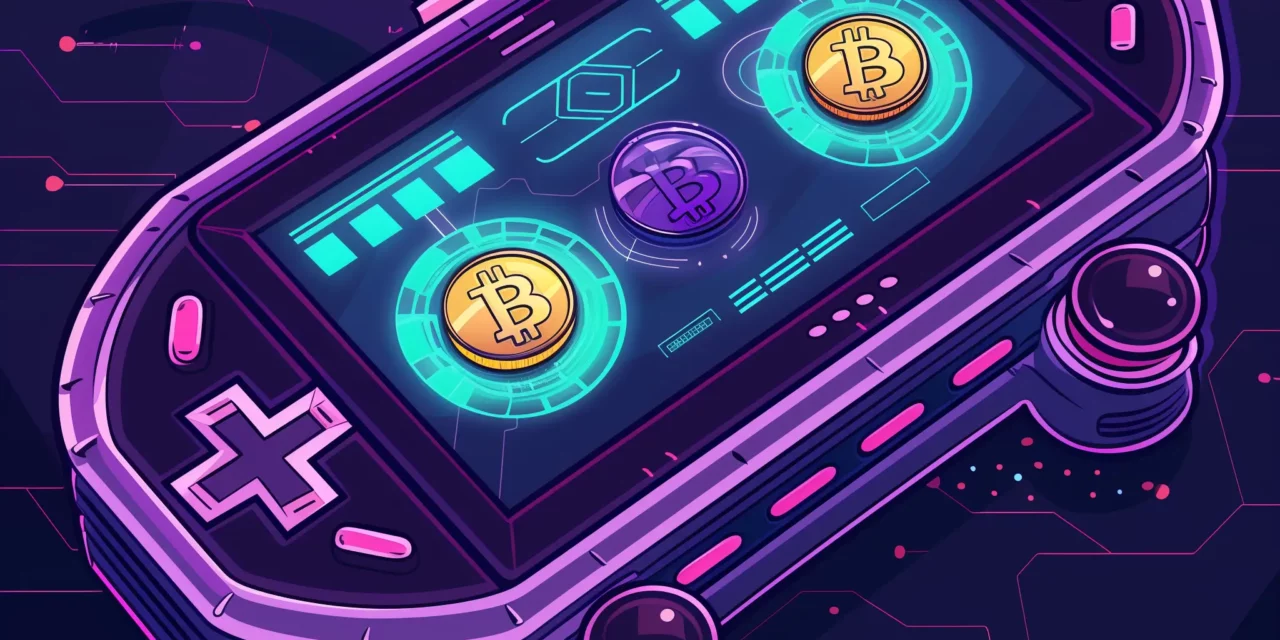NFTs have been a vital components in the advancement of decentralized applications in a number of sectors. NFTs began to gain significant tractions from 2017 onwards, with the advent of the Ethereum blockchain, while the first “non-fungible token” was actually minted in 2014, as an article by The Block explained.
In its own right, the gaming industry has been evolving for decades, as innovations in technology continue to facilitate processes and enrich user experience. However, the advent of crypto and especially blockchain applications have taken the experience at online casinos to another level, both for customers and for operators. One major application that has recently become increasingly intertwined with gaming are precisely NFTs, which are bringing about significant innovations for the entire market.
In a recent Brainhub interview, the Technical Director of game developer Wildlife Studios implied that the sector will change massively thanks to NFTs in the coming years: “This is going to disrupt the whole market. We’re going to see new companies climbing the top while the big old dinosaurs that don’t want to adopt because they’re very comfortable with their current business model will see their revenues drop.” But how will NFTs tangibly change – and effectively decentralize – the way we play? Let’s find out.
The Significance of “Crypto Gaming”
Many of the changes in gaming that the advent of NFTs will bring have to do with the cryptocurrencies, which are a part of the same decentralized spectrum. Crypto has revolutionized the way players relate to games, giving them the opportunity to buy and sell in-game assets such as NFTs, where available at this moment. In addition, crypto could also be used in the future to reward users for achieveing certain goals within games, such as passing a level or beating a top-tier boss. Crypto rewards could also be used to incentivize players to be loyal parts or participants of a community, therefore expanding the reach or loyalty of players to a certain game.
Tokenization and Platform Usage
It is now possible for game developers and operators to reward players with NFTs thanks to blockchain applications. Cryptocurrencies have essentially “tokenized” assets that are found in-game as rewards or can be purchased by users. Such items can include skins – as in many online games like Fortnite, or for example player cards, as in FIFA for example, or other items that either help the user to reach more levels or diversify the gaming experience entirely.
As NFT Evening writes, digital assets are helping decentralize the gaming sector by also offering platform interoperability when playing. “Crypto is the best way to ensure compatibility across NFT gaming platforms. Players can connect one crypto wallet to multiple platforms to easily trade digital assets or simply move NFTs.” These developments also ensure that users expend their earning potential, as earning rewards has become a “one size fits all” process where you simply need a crypto wallet to receive a prize, instead of having different games offer rewards in different manners.
Accessibility and Ownership
With NFTs being tied to the blockchain, rather than to a specific game, users will effectively have full ownership of their in-game assets. By being on the blockchain, NFTs and other assets instantly become more accessible for users than traditional in-game assets as they are held and trasferrable by anyone holding the private key of the wallet in which they are situated. This makes NFTs much more similar to real-life assets than in-game ones that players can acess sometimes on a single game or console, and cannot be moved around as freely.
This is precisely the key point: traditional, centralized in-game assets are exclusively linked to the game they are found in, meaning they are not transferrable, and may even end up disappearing once a player switches to a new platform, as a Coinbase article explained. With more platfroms introducing NFTs in-game, this will give users more control, accessibility and, indeed, ownership of their own assets, with the chnace to display and/or use them cross-platform.
Issues with NFT Gaming Application
While NFT applications will indeed revolutionize gaming for the better, there are also some issues that this innovative implementation could potentially face. Some difficulties that could present themselves include platform incompatibility, as opposed to the interoperability we just spoke about, and scalability issues, which is also one of the primary concern in all crypto-related applications.
Firstly, traditional gaming applications are incompatible with innovative NFT applications, meaning games will need to be upgraded and consoles most likely chnaged in order for these decentralized systems to be integrated in an extensive manner. In addition, while NFTs and the sector in general are becoming increasingly popular, with the market expected to his almost $500 billion by the ned of the year, many people have not yet tried out blockchain applications or are simply unaware of them.
Simplifying the way NFTs are applied to gaming may end up being beneficla for all sides in that regard, in addition to having game developers and console distributors focusing more on the informative side of the application, explaining the benefits of on-chain assets as opposed to in-game ones. Lastly, as in many crypto-related projects, NFT gaming platforms will inevitably face scalability issues, which layer-2 protocols may help to solve, at least partially. Otherwise, speed and performance of these platforms may struggle and drive gamers away as a result.
Sony Trailblazing Blockchain Gaming?
Sony, one of the world’s biggest tech and gaming conglomerates, was among the first to introduce blockchain applications to its videogame products. The giant has recently unveiled plans to incorporate “Super-Fungible Tokens” on their gaming consoles, which will allow players to transfer unique in-game assets between each other, as NFT Plazas reported. Sony, hiwever, has already been offering blockchain-related applications to its customers for years. For example, threy offered NFTs to Spider-Man fans back in 2021, after which they also entered the Metaverse. Finally, just one year ago, the Japanese corporation also itroduced the first-ever patent for cross-platform NFT trading, a development which will pioneer the world of gaming into a new Web3 ecosphere.
Conclusion
While technological advancements have enhanced the structure and in-game experiences for fans of every console – be it the addition of online gaming, or simply just improved graphics – the development and addition fo blockchain-related assets within games will inevitable taking gaming to the next level. But not just that: it will usher in a new ear where developers and gaming giants will have to modify their platforms in oder to cater to these new phase, where NFTs and digital assets will become ever-more mainstream, and as a consequence players will demand that their in-game assets and experience overall be facilitated and taken to the next level. Which companies will entertain this change first? Whgich will succeed, and which will fail? Only time will tell.
To read mnore about decentralized applications, NFTs and more, head over to the CoinGames blog. Join CoinGames to start your own decentralized gambling experience today!




